Elijah (9th century BC) and John the Baptist (6 BC- 30 AD)
Elijah was a prophet (Extraterrestrial Contactee - antenna) and miracle worker who lived in the northern kingdom of Israel during the reign of King Ahab.
He defended the Hebrew deity Yahweh over the Canaanite deity Baal. He suggested a test of the powers of their gods to light a sacrifice. Nothing happened on Baal's sacrifice but on yahweh's sacrifice, Fire falls from the sky, consuming the sacrifice, the stones of the altar itself, the earth and the water in the trench as well.
Elijah then orders them to seize the prophets of Baal, and kills them, by decapitated them, at which the rains begin, signaling the end of the famine.
Later on his life, he is taken into a spaceship, flies into the air and disappears from the place.
"And it came to pass, as they still went on, and talked, that, behold, there appeared a chariot of fire, and horses of fire, and parted them both asunder; and Elijah went up by a whirlwind into heaven. (Kings 2:11) "
On a later reincarnation, he is born as John the Baptist, Jesus' cousin. John belonged to the Jewish sect the Essenes, same as Jesus. John was also an ET Contactee.
John baptized Jesus when Jesus was 30 years old.
Jesus himself identifies John as "Elijah who is to come", and later after John's death:
" 10 And his disciples asked him, saying, Why then say the scribes that Elias must first come?
11 And Jesus answered and said unto them, Elias truly shall first come, and restore all things.
12 But I say unto you, That Elias is come already, and they knew him not, but have done unto him whatsoever they listed. Likewise shall also the Son of man suffer of them.
13 Then the disciples understood that he spake unto them of John the Baptist.
Matthew 17:10-13) ”
https://cosmicsong.org/index.php/references/book-of-matthew
John was sentenced to death and subsequently beheaded by Herod Antipas around AD 30 after John rebuked him for divorcing his wife and then unlawfully wedding Herodias, the wife of his brother Herod Philip I.
Even though John did many good deeds, he had to balance his karma since he beheaded many people when he was Elijah. He also died beheaded. Lots of the followers of Elijah that did the beheading also came later reincarnated as some of the apostles who were also killed.
-----
Elijah
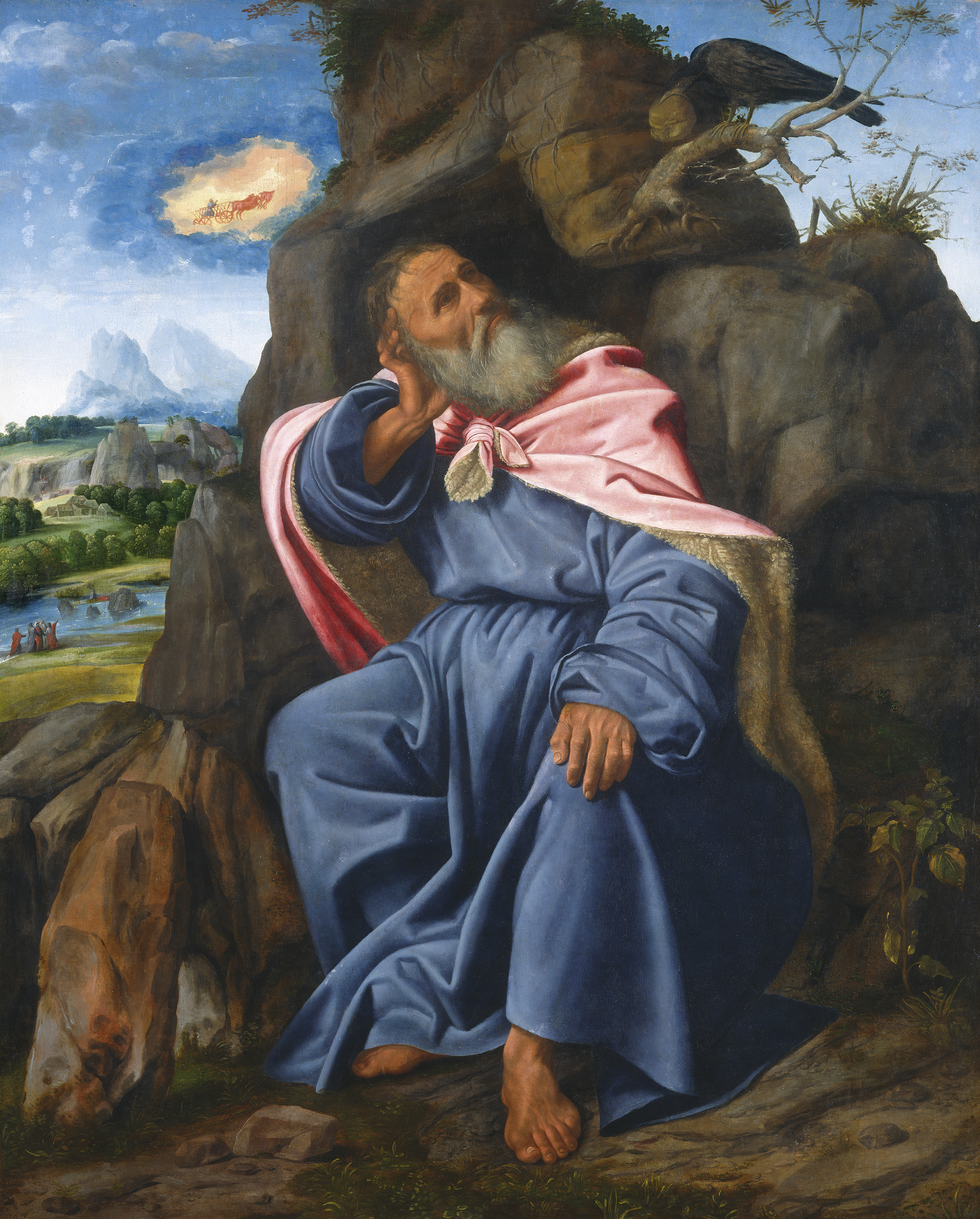
Elijah Fed by the Raven by Giovanni Girolamo Savoldo, c. 1510 (note: see the chariot of fire on top left corner)
Elijah or Elias ("My God is Yahweh/YHWH") was a prophet and miracle worker who lived in the northern kingdom of Israel during the reign of King Ahab (9th century BC), according to the Books of Kings in the Hebrew Bible.
Elijah defended the worship of the Hebrew deity Yahweh over that of the Canaanite deity Baal. God also performed many miracles through Elijah, including resurrection, bringing fire down from the sky, and ascending to heaven alive.
Elijah proposes a direct test of the powers of Baal and Yahweh (both Asherah and her prophets disappear from the story entirely): he and Baal's prophets will each take one of two bulls, prepare it for sacrifice and lay it on wood, but put no fire to it. The prophets of Baal choose and prepare a bull accordingly. Elijah then invites them to pray for fire to light the sacrifice. They pray from morning to noon without success. Elijah ridicules their efforts. "At noon Elijah mocked them, saying, 'Cry aloud! Surely he is a god; either he is meditating, or he has wandered away, or he is on a journey, or perhaps he is asleep and must be awakened. '"They respond by shouting louder and slashing themselves with swords, spears, knives, and sickles. They continue praying until evening without success.
Elijah then repairs Yahweh's altar with twelve stones, representing the twelve tribes of Israel. Elijah digs a trench around it and prepares the other bull for sacrifice as before. He then orders that the sacrifice and altar be drenched with water from "four large jars" poured three times, filling also the trench. He asks Yahweh to accept the sacrifice. Fire falls from the sky, consuming the sacrifice, the stones of the altar itself, the earth and the water in the trench as well. When the people see this, they declare, "The Lord—he is God; the Lord—he is God. "Elijah then orders them to seize the prophets of Baal, which they do, and Elijah brings them down to the River Kishon and slays them, at which the rains begin, signaling the end of the famine
Source:
https://en.m.wikipedia.org/wiki/Elijah
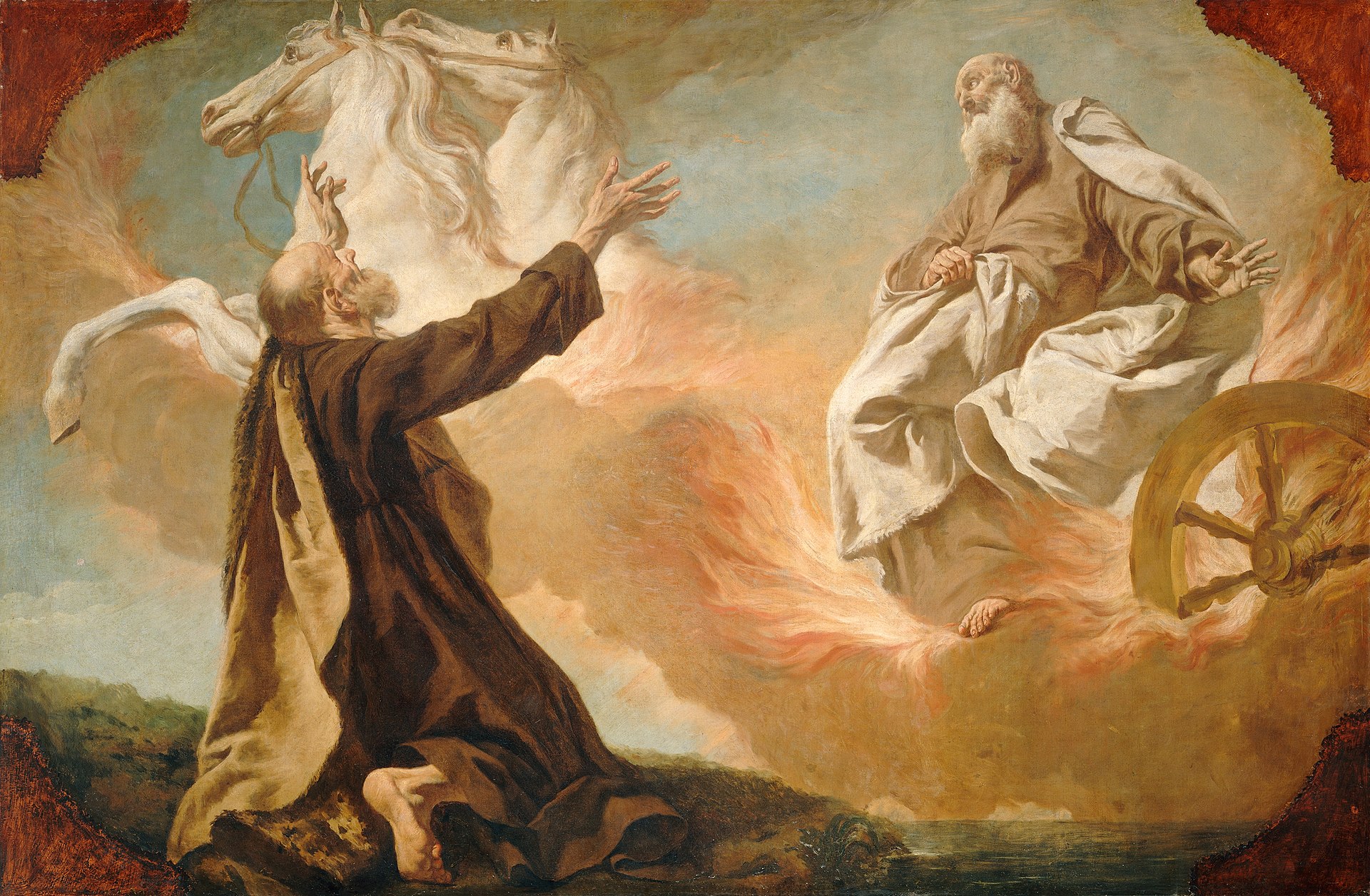
Elijah's chariot in the whirlwind. Fresco, Anagni Cathedral, c. 1250
Unknown authorUnknown author • Public domain
Elijah taken to heaven
And it came to pass, when they were gone over, that Elijah said unto Elisha, Ask what I shall do for thee, before I be taken away from thee. And Elisha said, I pray thee, let a double portion of thy spirit be upon me.
And he said, Thou hast asked a hard thing: nevertheless, if thou see me when I am taken from thee, it shall be so unto thee; but if not, it shall not be so.
And it came to pass, as they still went on, and talked, that, behold, there appeared a chariot of fire, and horses of fire, and parted them both asunder; and Elijah went up by a whirlwind into heaven.
Source:
https://www.kingjamesbibleonline.org/elijah-taken-to-heaven_bible/
-----
John the Baptist
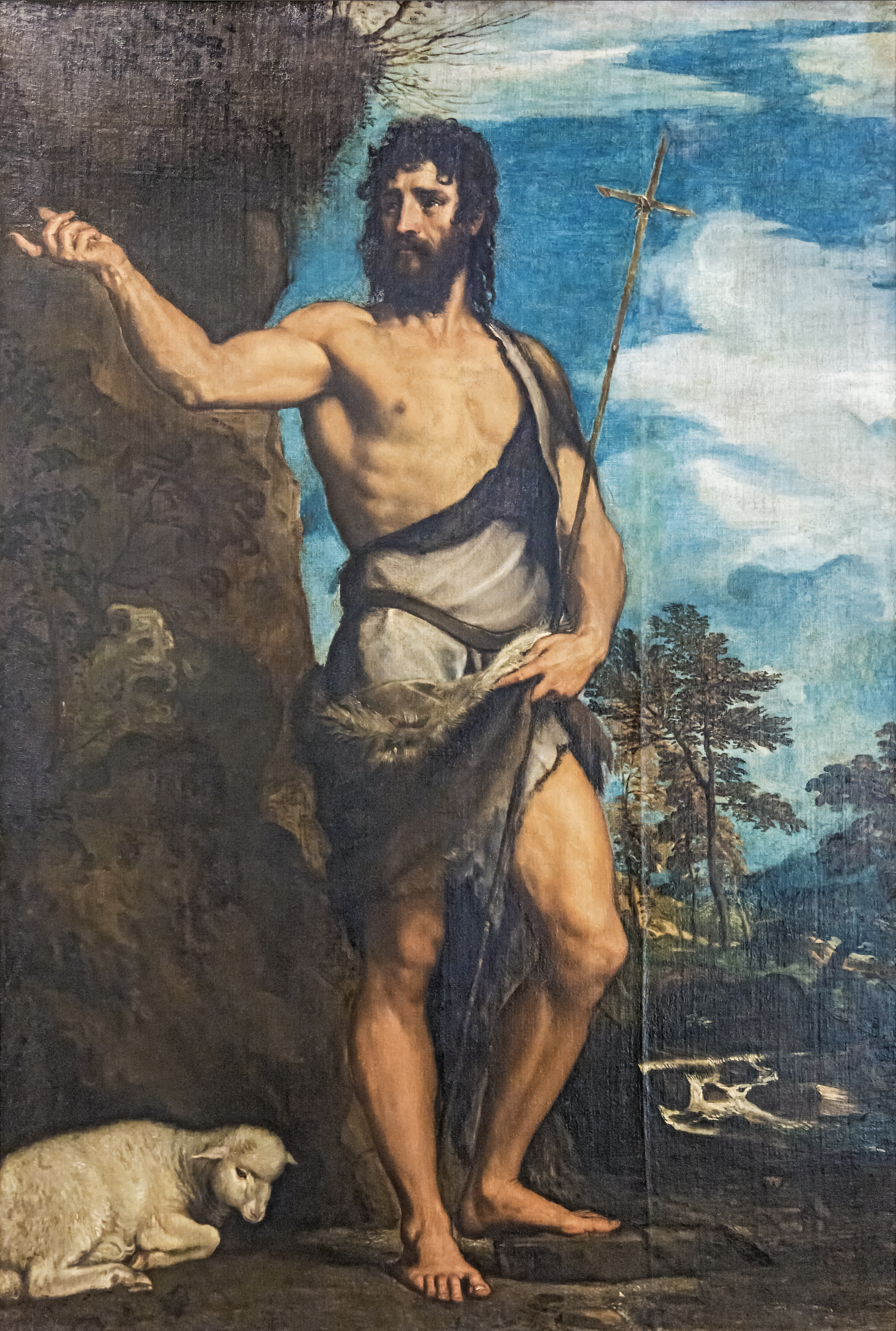
Saint John the Baptist, a 1540 painting by Titian
John the Baptist (c. 6 BC – c. AD 30) was a Jewish preacher active in the area of the Jordan River in the early first century AD. He is also known as Saint John the Forerunner in Eastern Orthodoxy and Oriental Orthodoxy, John the Immerser in the Baptist tradition, and as the prophet Yahya ibn Zakariya in Islam. He is sometimes referred to as John the Baptiser.
Some scholars think that John belonged to the Essenes, a semi-ascetic Jewish sect who expected a messiah and practised ritual baptism. John used baptism as the central symbol or sacrament of his pre-messianic movement. Most biblical scholars agree that John baptized Jesus,and several New Testament accounts report that some of Jesus's early followers had previously been followers of John.
According to the New Testament, John was sentenced to death and subsequently beheaded by Herod Antipas around AD 30 after John rebuked him for divorcing his wife and then unlawfully wedding Herodias, the wife of his brother Herod Philip I.
Source:
https://en.m.wikipedia.org/wiki/John_the_Baptist

The Baptism of Jesus Christ by Piero della Francesca, c. 1448–1450
Piero della Francesca • Public domain (note: see the clouds shapes)
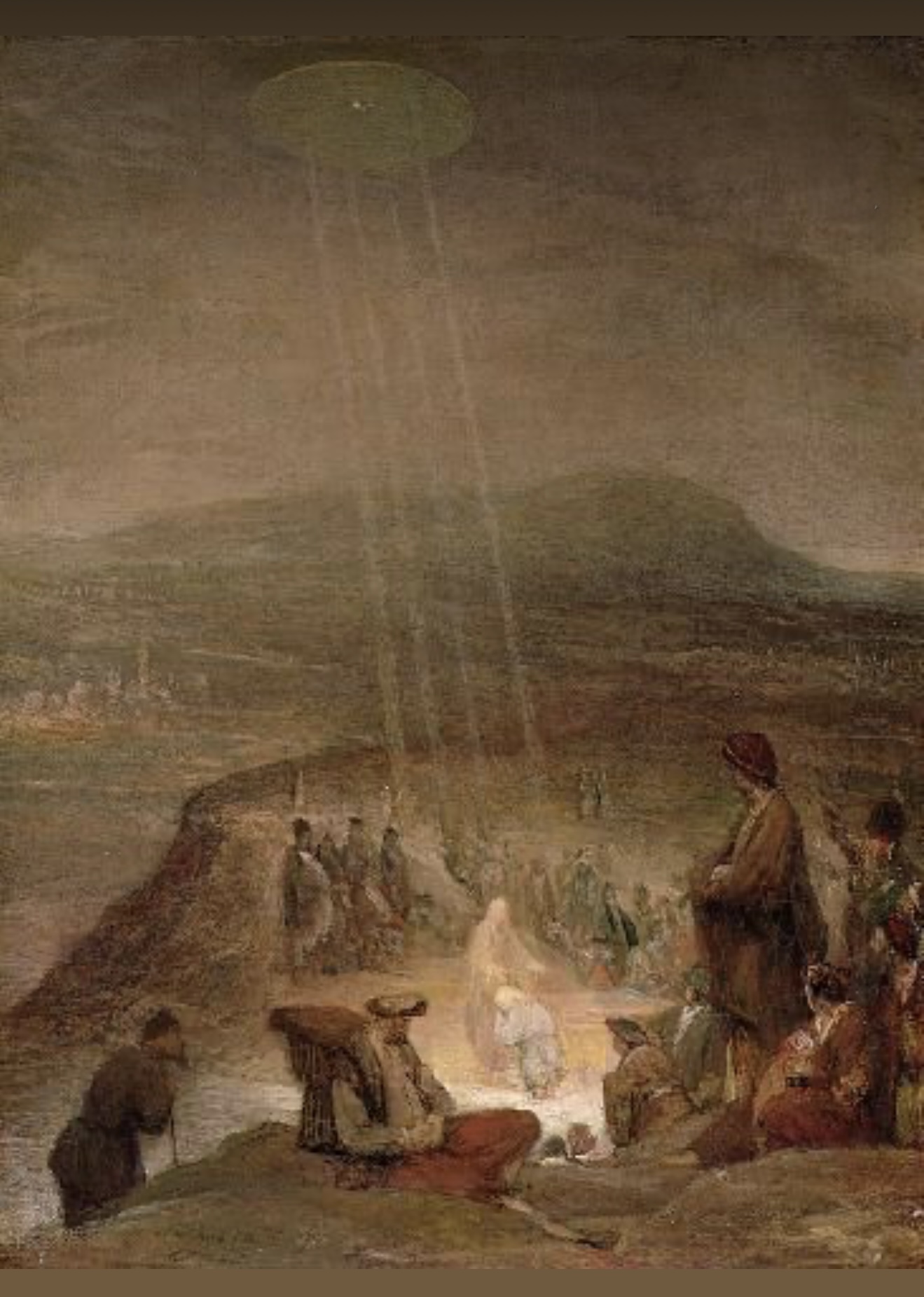
The Baptism of Christ, London. Painted in 1710 by Flemish artist Aert De Gelder
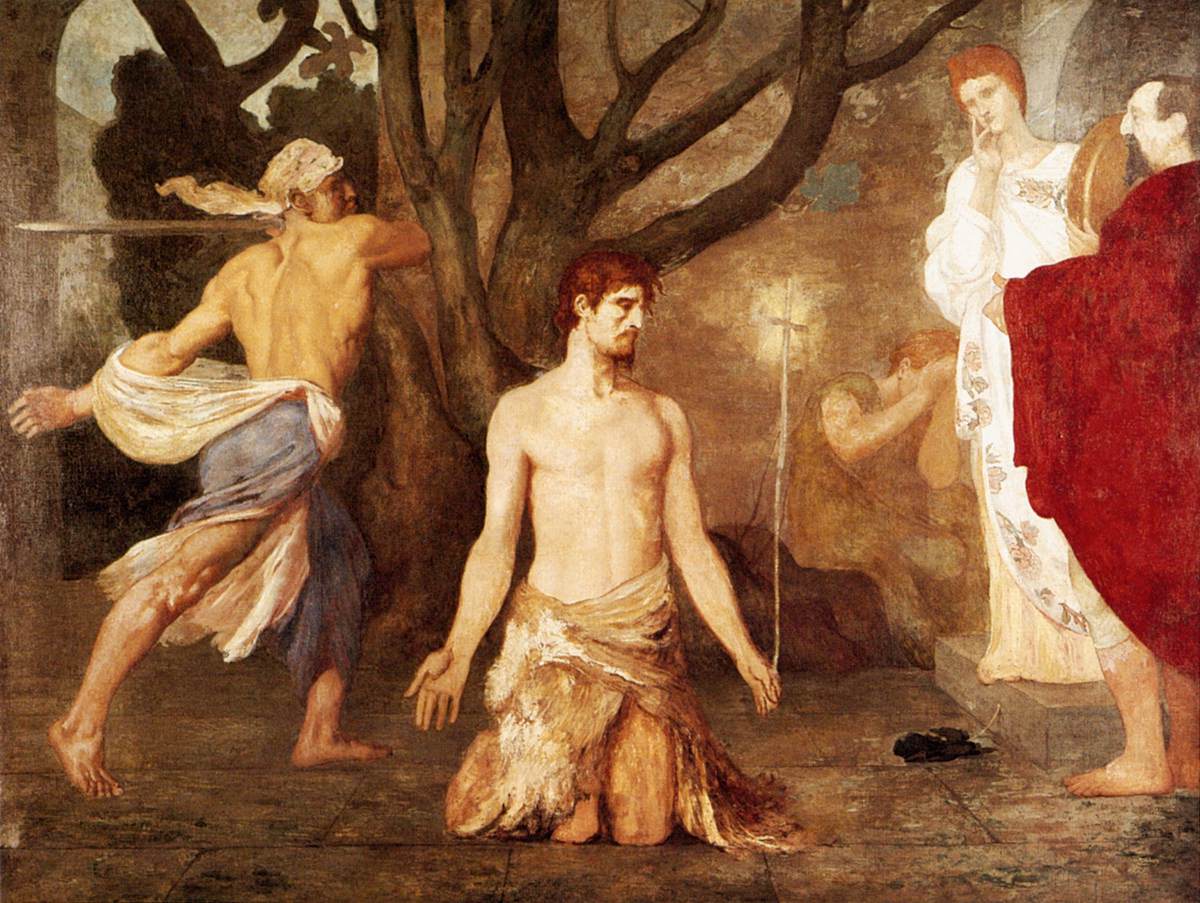
Beheading of St John the Baptist by Massimo Stanzione, 1635
Massimo Stanzione • Public domain